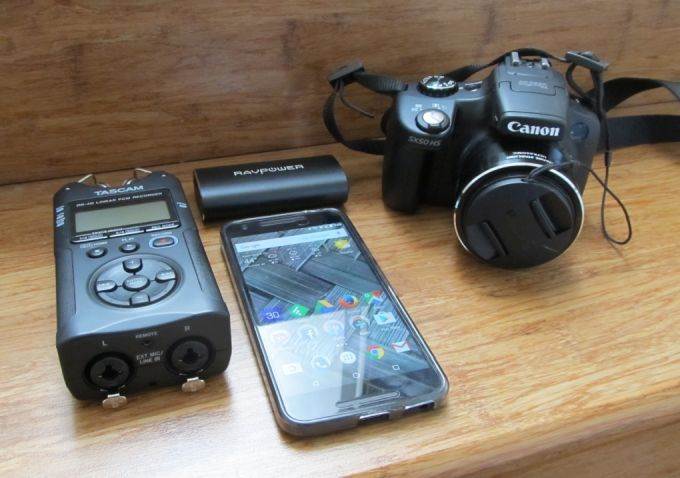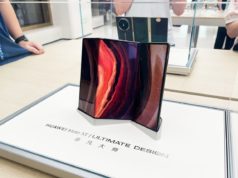The annual Consumer Electronics Show kicks of this week, and as usual, it provides a great chance to put my personal gear to the test. I write about mobile tech on a daily basis, but the one week out of the year when I most rely on it is when I’m running around Las Vegas trying to cover this sprawling tech show.
As in past years, I’m trying to travel light: my reporting kit basically consists of a laptop, a phone, and a camera. But in the past few months I’ve replaced my phone and laptop, so this year’s gear bag looks a bit different than usual.
I’m also packing a digital audio recorder this year in case I want to do any on-the-spot interview for the LPX podcast, but CES isn’t really the best place for that, so I suspect it’ll stay in my backpack most of the time.
So here’s a breakdown of what’s in my CES reporting kit this year:
Acer Aspire S 13 notebook
I picked up this 3 pound, 13 inch laptop a few months ago when it was on sale for $699.
While it isn’t quite as svelte as my trusty old Samsung Series 9, it’s much more powerful thanks to its Core i7-6500U Skylake processor, 8GB of RAM, and 256GB of storage (up from a Core i5-2537M Sandy Bridge CPU, 4GB of RAM, and 128GB of storage).
The notebook also has a matte touchscreen display, a USB 3.1 Type-C port, and a fan that’s a little louder than I’d like, but that’s not really a problem when working in noisy environments like the Las Vegas Convention Center press room.
A built-in Ethernet port would have been nice, since press rooms often have more reliable wired internet connections than wireless. But a USB adapter takes care of that.
Most importantly, this laptop is pretty new and gets around 7 hours of battery life, which means I’ll probably be able to get buy without carrying around an extra 1.1 pound external battery as I’ve done in previous years.
Google Nexus 5X with Project Fi
I finally got fed up with the declining battery life in my aging Nexus 5 smartphone this year and decided rather than spending $650 or more on a Google Pixel phone, I’d pick up a 2015 Nexus 5X for $250.
The phone runs Android 7.1 without complaint, and as I noted when I first tested a review unit in late 2015, the camera is a huge step up from my Nexus 5.
One nice benefit of upgrading is that I was able to switch from Straight Talk to Google’s Project Fi. In many months, I use less than 1GB of data, which means that Project Fi could save me money throughout the year.
I suspect I’ll use several gigabytes this week alone, which could offset the pricing. But Google only charges you for the data you use, so I’m not worried about going over my allotment.
And unlike most carriers, Google doesn’t differentiate between tethered and untethered data. With Straight Talk, there was no official support for using a phone as a WiFi hotspot. With Project Fi, it’s easy to do.
So I’ll probably be using my phone to get online if I find myself in a situation where there’s limited or no WiFi. And I’ll also be using it for planning my schedule, navigating my way through the city, and maybe even for snapping photos.
If I can come up with a good workflow for quickly transferring pictures to my laptop, I’m tempted to try using the Nexus 5X for most still photography at the show, relying on my Canon camera primarily for video… and for shots that require a zoom lens.
Canon PowerShot SX50 HS
This is the same camera I brought last year. It’s a 12.1MP camera with 50x optical zoom, which comes in handy when covering press conferences, since I can get close-up shots of people and products on stage, even if I’m sitting in the back of the room.
It can also shoot 1080p video and features optical image stabilization.
Unfortunately, I find the auto-focus isn’t as good as on previous Camera PowerShot SX series camera’s I’ve used, so I don’t always notice that my pictures a blurry until I go to crop and upload them to the website.
Or maybe I should just learn how to manually adjust settings and get a DSLR one of these days.
For now, one of the reasons I’m considering using my phone for still photography is that it takes some pretty great photos and has an excellent. I’d use it for video too, but the phone lacks image stabilization.
Tascam DR40
I recently picked up some new audio recording gear for a new podcast I’m working on, including a Tascam DR-60D MKII recorder and a Tascam DR-40 handheld recorder.
The DR-60D has surprisingly good preamps for a device in its price range, and it’s what I use when I want to set up a recording studio on the go: plug in two mics, adjust volumes independently, and monitor the whole thing through headphones.
But the DR-40 is a much more portable device since it has decent built-in mics that let you record in the field without carrying around an extra mic. For one-on-one interviews, this should do the trick. And it’s a relatively cheap device, so I won’t be too upset if something happens to it while I’m running around.
Mostly I use it as a backup for the DR-60D and a trusty old Sony PCM-D50 recorder.
RAVPower 6,700 mAh portable charger
This pocket-size battery holds enough power to recharge my phone two or three times, or to keep the Tascam recorder running if its AA batteries die down.
It also supports 2.4A output, so it takes less time to charge my phone on the go than it would with some other cheap portable batteries.
Odds and ends
For the flight, I’ll be packing a Kindle Paperwhite and NOOK HD+ tablet (running CyanogenMod… RIP). The Kindle is for reading eBooks, while the NOOK is for watching videos and/or reading comics.
My plane trips to and from Vegas are usually the only opportunities for relaxation I have during CES week. I’ve also got a cheap pair of noise-cancelling earbuds that I can use to listen to videos, podcasts, or music both in the plane and while walking from place to place in the city.
And my UE Mini Boom Bluetooth speaker will keep me company by blasting music while I’m working late at night from my hotel room.
A portable humidifier I picked up a few years ago will helpfully keep me from getting nosebleeds in the dry desert air. I’ve had mixed results with this system in the past, but I’ve generally found having a humidifier is better than not having one.
Want to see how my reporting kit has evolved over time? You can see what I brought in years past, including 2016, 2015, 2014, 2013, 2012, 2011, 2010, and 2009.







